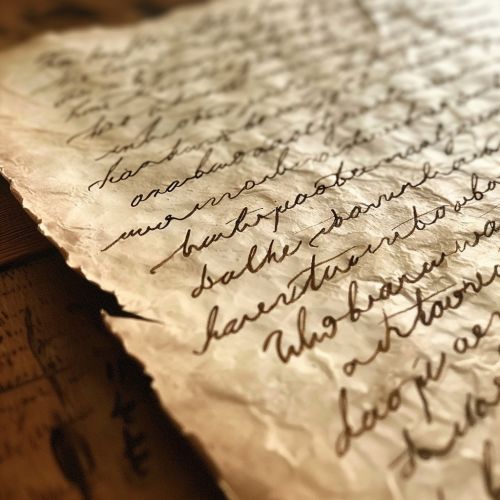Meter (poetry)
Introduction
A meter in poetry is the basic rhythmic structure of a verse or lines in verse. It is a poetic device that serves as a linguistic sound pattern for the verses, as it gives poetry a rhythmical and melodious sound. The study of different types of meter and forms of versification is known as prosody.


Definition
In poetry, meter is the pattern of stressed and unstressed syllables in a verse, or within the lines of a poem. Stressed syllables tend to be longer, and unstressed shorter. In simple language, meter is a poetic device that serves as a linguistic sound pattern for the verses, as it gives poetry a rhythmical and melodious sound.
Types of Meter
There are several types of meter, including:
Iambic
Iambic meter has the first syllable unstressed, followed by the stressed syllable. It is the most common meter in English poetry, and is used in many famous works, such as Shakespeare's sonnets.
Trochaic
Trochaic meter, on the other hand, has the first syllable stressed and the second unstressed. This meter is often found in children's poetry and in the works of William Blake.
Anapestic
Anapestic meter has two short or unstressed syllables followed by one long or stressed syllable. It is often used in comic verse, and is also found in the works of Lord Byron.
Dactylic
Dactylic meter has the first syllable stressed and the remaining two unstressed. This meter is less common in English poetry, but is often used in Greek and Latin verse.
Spondaic
Spondaic meter, which is not common in English verse, has two stressed syllables. It is often used for effect in certain situations, such as in dramatic verse.
Scansion
Scansion is the process of marking the stresses in a poem, and working out the meter from the distribution of stresses. It is a way to visually represent the rhythm of a poem.
Use in Poetry
Meter is a fundamental part of poetry, as it gives rhythm and regularity to the poem, enhancing its musicality and making it more enjoyable to read or listen to. It also helps to convey the mood of the poem and can emphasize certain words or themes.
